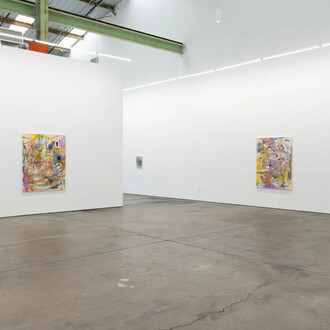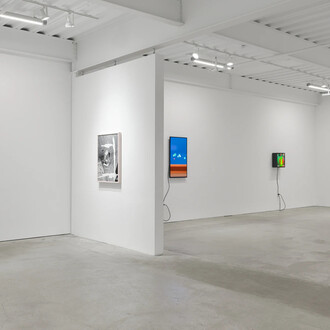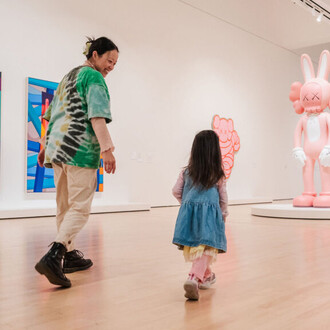For his third solo exhibition at Altman Siegel titled Albatross, Will Rogan presents new sculptures and photographs that grow from a troubled relationship to the built environment and a longing to both connect and disassociate from culture. Focusing on nature, Rogan entangles his work with organic elements and ecological processes, rejecting culture’s standards for quantifying and tracking time.
One body of work is comprised of photographs made in Antarctica, the Eastern Sierras, and Wyoming during a total solar eclipse. The unique photographs are traditional black and white silver gelatin prints, presented in handmade sculptural frames. The photos depict scenes that feel as though people have never looked at them. For some of the pictures this is their central subject—a lack of human seeing. Several large sculptures are on view in the exhibition, including a sculpture made from the mast of Rogan’s boat (where he has lived for the past four years) with an urn-shaped pot covered in aquatic life balanced on top. The urn had been suspended under the boat for one and a half years where it became colonized by sea life. Its new position on top of the twenty-foot mast physically elevates something that arrived from dark, murky depths and is a gesture intended to be considered formally as well as metaphorically.
Enlarged, bisque-fired replicas of coffee cups placed atop large rocks make up another aspect of the exhibition. Filled with ocean water over time, the water soaked through the porous ceramic, depositing salt crystals over the surfaces of the vessels. The resulting sculptures offer three distinct timescales to consider: a humans’ coffee break, geological eras and the ocean tides’ circadian bond to the universe. The last part of the exhibition is comprised of small, handcrafted sculptures. Composed of elevated ruins, they are made from fragments of painted wood, cuckoo clock chains, clock motors, and brass and often contain a figurative element drawn from Rogan’s home-life narrative.
















